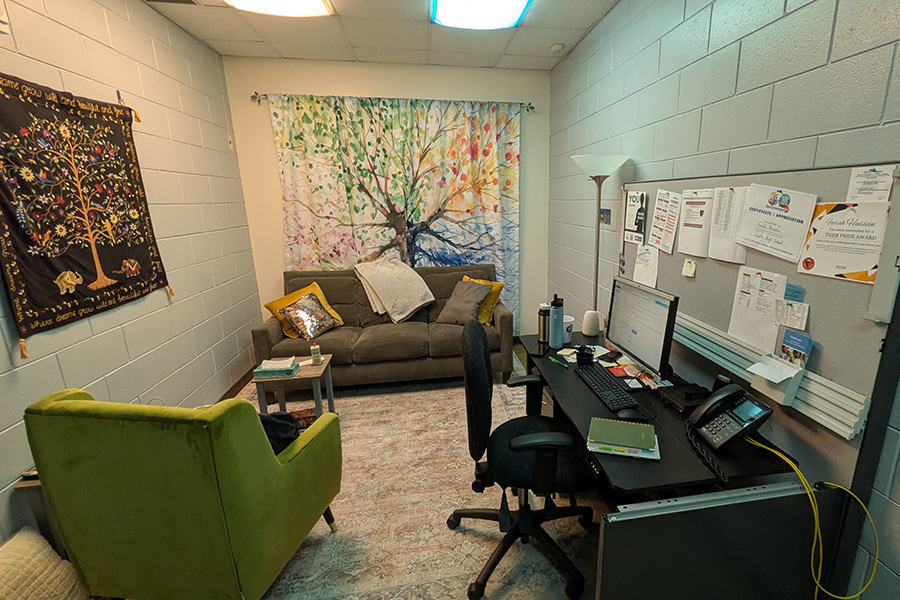In 2009 the Minneapolis Public School board put the Changing School Options plan into effect, thereby depriving thousands of lower income students from a shot at actual education and future prosperity
Prior to the change, when a student was in 8th grade, they applied to a certain program at a specific high school. In that system, students were given an option to apply to any high-school in the city. They also had to have a G.P.A. that was relatively close to the standard at the program. The student was then provided the necessary transportation.
Now, students are more or less forced to go to one of the schools in their attendance zone. The three zones are conveniently located near, or directly upon, major socioeconomic borders.
This change has affected every student at South save for the senior class. South is one of the few schools that still has city-wide programs (Open and All Nations), meaning that it can draw in students from all attendance zones for these programs. But students in the Liberal Arts Program must come from South’s zone or provide their own transportation.
The change in school zoning was an attempt to cut down on student busing, which was a major cost issue for the district. The district had already instituted a 2-mile walk zone for high school students to cut the transportation costs. The Changing School Options plan dictates that students who live outside the schools’ attendance zones do not get a school bus.
The economizing of the district is a good idea in theory, seeing as our state is over $43 billion in debt and has little room for excessive spending. In practice, the actual streamlining of education has gone far less smoothly.
The new zoning has forcibly segregated the district.
The predominately white, upper-middle class southwest quadrant of the city sends students and their money to Southwest and Washburn High Schools. The neighborhoods those schools are in have high property values and a community that is largely white.
Being white is by no means a bad thing, it’s just that in American society, whites still hold more power and property than other racial groups, and as a result, white neighborhoods have higher property values. Prior to the Changing School Options plan, the economic prosperity was spread throughout a more reasonable amount of the city. With the current system, the students from Zone 3, the most economically elite, are encouraged to stay in their zone, while students from the outside are forcibly kept out. This creates an oppressive cycle, where the amount of money your family makes essentially determines your level of education.
Students that are having economic issues have less resources to get them to and from school everyday. The students that need the most financial support to get the best education possible are not getting it.
This system is essentially a re-creation of the separate-but-equal policies that existed before integration and the civil rights movement in the 1960s. The flimsy veil of reducing costs is a front for a system that segregates students by race and income and deprives all students of the benefits that come from the diverse perspectives of a multi-ethnic student population.
Statistics also suggest that this concentration of students by income has an effect on student achievement.At Southwest, where only 25.9% of the students qualify for free or reduced lunch, 70.8% of the 11th graders passed the MCA-II GRAD Mathematics test. Contrast this with Edison High School, where white students make up only 10.8% of students and more than 90.8% qualify for free/reduced lunch, and only 17.3% of 11th graders passed the MCA-II GRAD Mathematics test.
According to a 2005 study done by Pamela E. Davis-Kean at the University of Michigan, there was a distinct link made between household income, parent education and the resulting academic success of the child. It states that higher income households tend to have parents with generally more stable mental health and time to spend with their child. The study also insinuated that a more affluent parent will have more habits that positively reinforce a child’s learning, such as reading and respectful behavior for others.
Academic success is not impossible in the areas negatively affected by the change in zoning, but the change still affects the lives of thousands of students. Lower income students don’t have the resources to escape the environment in which they live, trapping them in a lower quality of education and therefore lower future economic prosperity.
Even though schools are now receiving a more realistic amount of money, the district has let down the schools that still need the most help, proving that the actions of those in power will only benefit those who can afford it. This is conscious economic discrimination, tightening the passage through which the poor can ascend to economic prosperity through education.






